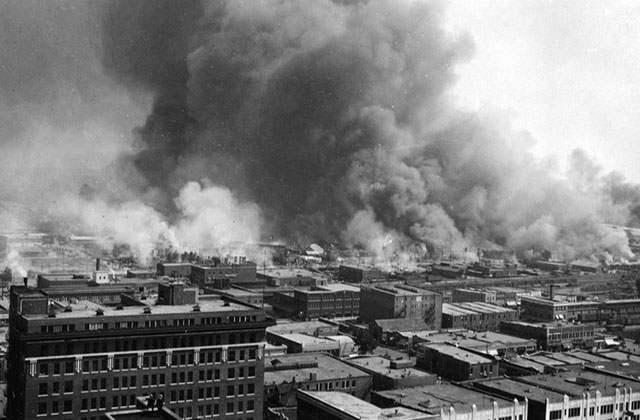The all-Black Greenwood District in Tulsa, Oklahoma, was once heralded as "Black Wall Street" for its burgeoning economy until an angry White mob massacred its Black residents in 1921, which HBO dramatized in the premiere episode of “Watchmen.” Fast forward nearly 100 years, the community is in jeopardy of being gentrified, according to an article published in Zora on March 19.
Sadly, it seems the encroachment into this historic district has been happening for some time. In 2016, the Tulsa Development Authority (TDA), which, according to its website “focuses on land acquisition and sales for targeted economic development,” released a Greenwood/Unity Heritage Neighborhoods plan to “revitalize” the neighborhood, in which the “area’s new ‘brand’ should be based upon its rich history and highlight unique assets that the community has,” according to the plan. The 60-plus page document made no mention of making sure residents who may have family ties to such rich history stayed in Greenwood.
In fact, Zora’s reporter Kendriana Washington explained in the article that last year the TDA published updates to the plan, regarding Black Wall Street, “that could irreparably displace thousands of Black families, upend historic Black Wall Street, and give the TDA power to initiate the compulsory removal of Black and Brown households through eminent domain.”
Tulsa World ran an article in June 2019 that spoke directly to displacement fears, with one longtime resident saying, “I’m not opposed to coffee shops and Whole Foods, but those are signs of gentrification.”
Looking deeper into TDA’s plan, some feel that the devil is in the details. “I was a little bit alarmed by some of the language that they were using when they were describing their objective goal of the sector plan,” Burlinda Radney, a land-use expert and city commission board member, told Zora.
A 2018 amendment addressed the need for federal funding against “distress and blight,” minimizing the voice of the residents. “My question to the TDA is how do you create a race-neutral policy in a predominantly Black neighborhood that has historically been adversely affected by race?” Radley asked. “It’s not possible to do anything that is race-neutral without it actually being race-specific in terms of its negative outcomes.”
